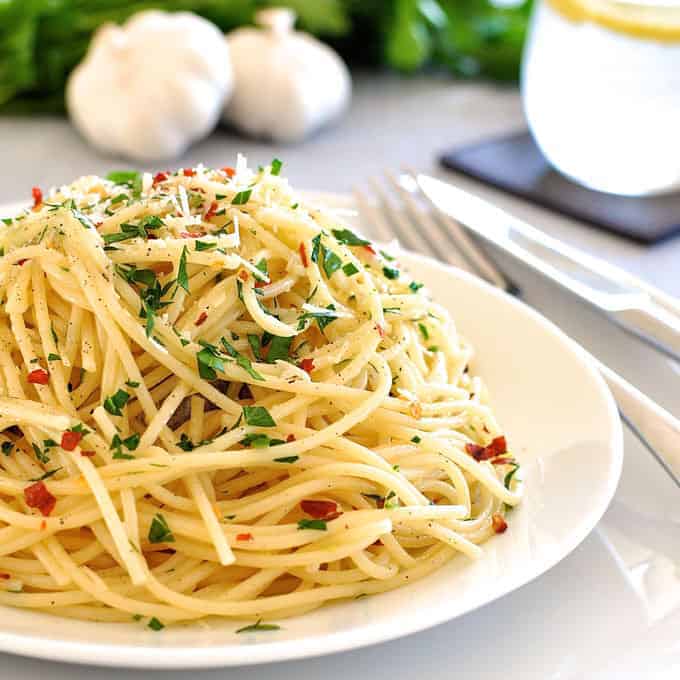While we do think of pasta as a culturally Italian food, it is likely the descendent of ancient Asian noodles. A common belief about pasta is that it was brought to Italy from China by Marco Polo during the 13th century.
Is pasta considered Italian food?
Pasta is a staple food of Italian cuisine. Pastas are divided into two broad categories: dried (pasta secca) and fresh (pasta fresca). Most dried pasta is produced commercially via an extrusion process, although it can be produced at home.
What is pasta called in Italy?
No surprise here: in Italian, pasta is called “pasta.” There are two categories of pasta, pasta fresca (fresh pasta) and pasta secca (dried pasta).
Where was pasta invented?
Origins. Although popular legend claims Marco Polo introduced pasta to Italy following his exploration of the Far East in the late 13th century, pasta can be traced back as far as the 4th century B.C., where an Etruscan tomb showed a group of natives making what appears to be pasta.
Is every pasta from Italy?
Worldwide, pasta has become synonymous with Italian cuisine. Italian immigrants themselves brought pasta everywhere they went. While it is true that the most famous varieties and recipes of cooking pasta really do come from Italy, surprisingly, the actual origin of pasta lies elsewhere!
Where was pasta invented?
Origins. Although popular legend claims Marco Polo introduced pasta to Italy following his exploration of the Far East in the late 13th century, pasta can be traced back as far as the 4th century B.C., where an Etruscan tomb showed a group of natives making what appears to be pasta.
Did Italians invent pasta?
While we do think of pasta as a culturally Italian food, it is likely the descendent of ancient Asian noodles. A common belief about pasta is that it was brought to Italy from China by Marco Polo during the 13th century.
What country eats the most pasta?
Italians are by far the heaviest pasta consumers, with a per capita consumption of 23.5 kg, 1.4 million tons in total.
Is pizza an Italian word?
Pizza, of course, is borrowed from Italian, but the deeper ingredients of the word, if you will, are unclear. Some think the Greek pitta (pita, with a root sense of “bran bread”) is the source. Others look to the Langobardic (an ancient German language in northern Italy) bizzo, meaning “bite.”
Do Italians eat plain pasta?
Plain pasta (or pasta in bianco in Italian). Yes, it’s the dish you make when there’s nothing else in the house. But that’s not the only time. It’s an easy alternative when your kids don’t want to eat what you’ve actually made for lunch or dinner.
Who made first pasta?
According to history, however, pasta’s earliest roots begin in China, during the Shang Dynasty (1700-1100 BC), where some form of pasta was made with either wheat or rice flour. Pasta also appears to be a feature in the ancient Greek diet in the first millennium BC.
Was pizza created in Italy?
Pizza has a long history. Flatbreads with toppings were consumed by the ancient Egyptians, Romans and Greeks. (The latter ate a version with herbs and oil, similar to today’s focaccia.) But the modern birthplace of pizza is southwestern Italy’s Campania region, home to the city of Naples.
What are the 4 types of pasta?
There are four great Roman pastas, all connected: Gricia, Cacio e Pepe, Carbonara, and Amatriciana. They each play off of the others and reveal different sides to the same concept.
Who invented spaghetti?
Modern pasta has no eggs and is dried in special chambers where cool, dry air is circulated around the pasta to ensure it dries evenly to avoid cracking or warping. This type of spaghetti was very definitely invented by the Italians. In fact, it was the creation of one Italian in particular: Nicola de Cecco.
What is the most popular pasta dish in Italy?
Italy’s most popular pasta is penne. This quill-shaped pasta is unusual in that it has a very precise origin. It was born in 1865, with a new device patented by Giovanni Battista Capurro in the small town of San Martino d’Albero, near Genoa.
Do Italians put egg in pasta?
Pasta from north Italy is often made with soft wheat flour (all-purpose or type 00), which grows primarily in the northern regions. Since soft wheat flour is low in protein, the addition of eggs is required to bind the dough together, resulting in silky, golden sheets of pasta.
Whats the opposite of Italian food?
French food is notoriously complex, with fussy sauces that are just about impossible to get right without attending culinary school. Italian food is the polar opposite. The best dishes in Italy usually involve fewer than five ingredients and can absolutely be duplicated at home.
Did Italy Get Chinese pasta?
Absolutely not, historians say. HONG KONG — Pasta is Italy’s staple food, but it’s not only Italians who indulge in platefuls of the doughy concoction every day. People all over the world adore it.
Is pasta considered Italian food?
Pasta is a staple food of Italian cuisine. Pastas are divided into two broad categories: dried (pasta secca) and fresh (pasta fresca). Most dried pasta is produced commercially via an extrusion process, although it can be produced at home.
Who invented the noodle Italy or China?
What age group eats the most pasta?
For both males and females, 9-18 year-olds consumed the highest amounts of noodles.
What country eats the most pizza?
Each day, approximately 1 million pizzas are consumed in Italy.









